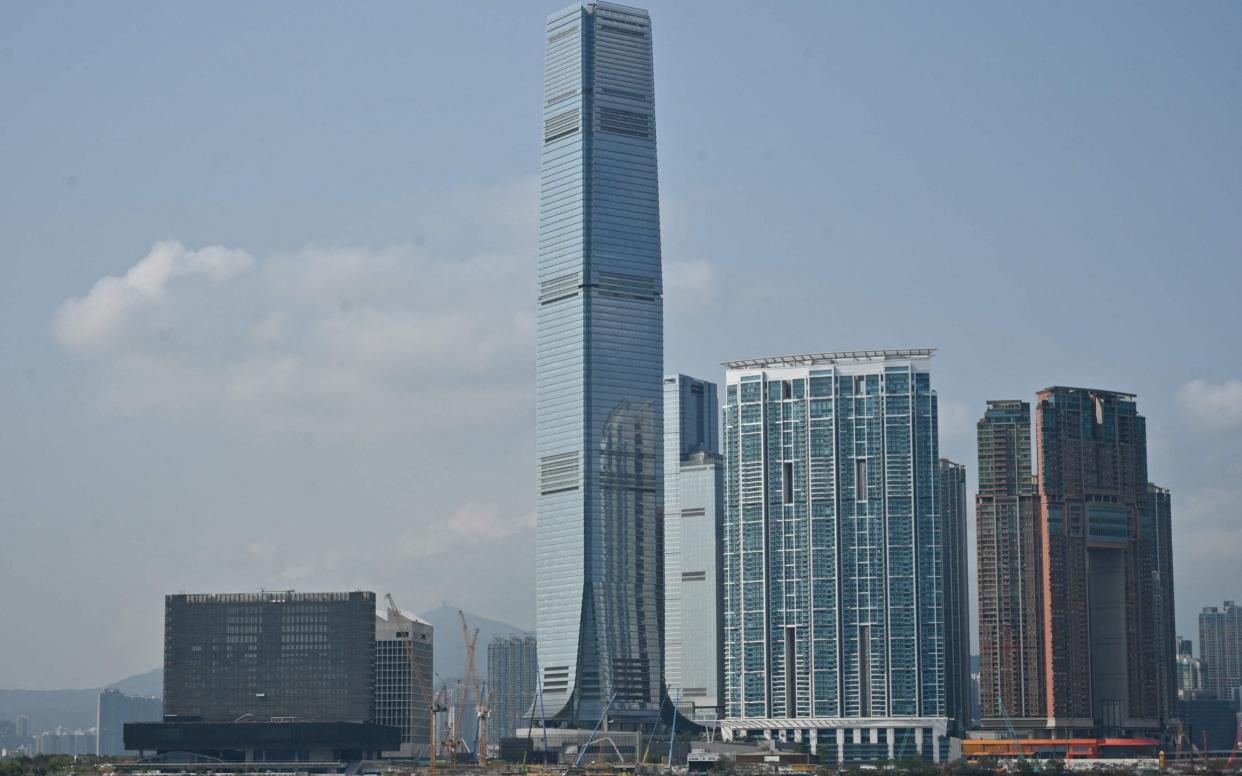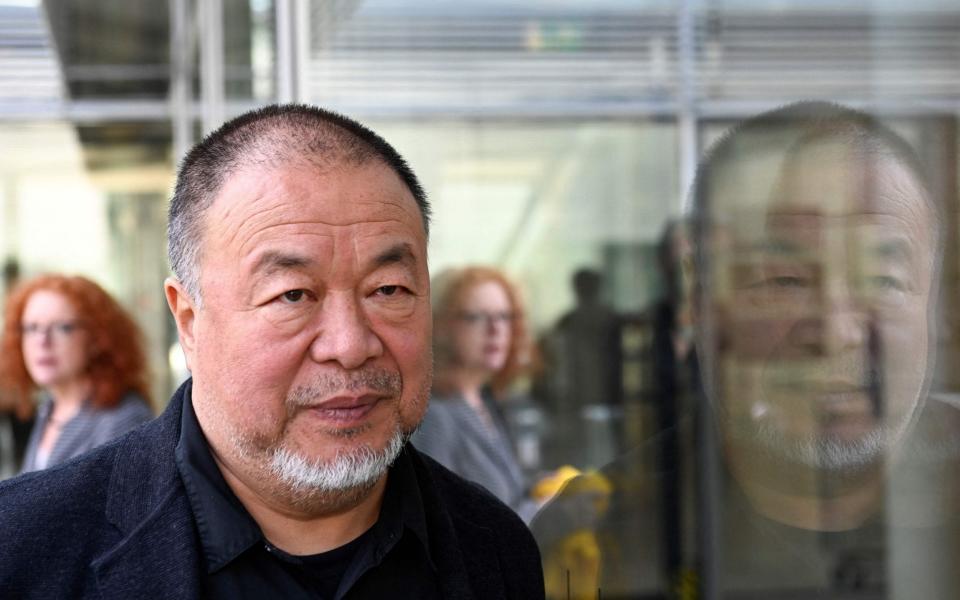Hong Kong museums targeted by China as Beijing squeezes out thriving arts scene

- Oops!Something went wrong.Please try again later.
- Oops!Something went wrong.Please try again later.
Perched on the shores of Hong Kong’s stunning Victoria Harbour, M+, a multibillion-dollar art museum had grand hopes of fulfilling the city’s ambitions of becoming a global contemporary arts hub when it opens later this year.
Instead, it has already been thrust into a controversy that threatens to undermine the notion of freedom of artistic expression in the former British colony as it grapples with the consequences of a new national security law that outlaws criticism of China’s government.
Henry Tang, the government official in charge of the cultural park where the museum is located, confirmed last week that no artworks will be displayed if they are deemed to breach the law, imposed by Beijing last July in a bid to quell the months-long pro-democracy protests that roiled the city in 2019.
He said it would ultimately be up to the police to determine whether art collections crossed a red line.
Among the early casualties of Hong Kong’s new parameters is a photograph by Ai Weiwei, a dissident Chinese artist and critic of the Communist party’s human rights record, which shows him flipping a middle finger in Tiananmen Square, the scene of the 1989 massacre of anti-government students.

The institution released a statement on March 24 to confirm it has no plans to show the artwork Study of Perspective: Tian’anmen (1997) at the opening exhibitions.
Mr Tang insisted it was not a retraction as the photo was never intended for the opening.
But the denials followed a week of orchestrated criticism from pro-Beijing media and politicians who lambasted the “anti-government” activities of art groups and questioned whether works including Ai Weiwei’s would violate the law.
Some artwork was “spreading hatred against China,” said Eunice Yeung, a pro-establishment politician. “Why does the government have to spend an extortionate amount of money and labour on allowing this type of art to be displayed at M+?”
Carrie Lam, the city’s chief executive, entered the fray, vowing to be on “full alert” against artwork displays deemed to be endangering the city’s national security in government-funded spaces.
“We have to respect the freedom of artistic expression but I’m sure staff are able to tell… whether pieces are meant to incite hatred or to destroy relations between two places and undermine national security," she said

The Ai Weiwei photo belongs to a vast collection of modern Chinese art donated by Uli Sigg, a former Swiss ambassador to China, and is one of a series where the artist raises his middle finger at symbols of authority, including the White House, Germany's Reichstag and Russia's Kremlin.
“Challenging authority is one of the core values of art,” Mr Ai told a local Hong Kong radio station.
In an AFP interview, he described the curators behind M+ as "very professional" people with "creative integrity" who are dealing with "an extremely fast-changing world".
He said he was “proud” of his Tiananmen photo but the artist, who was once feted by the Chinese authorities before being hounded and jailed as a critic, lamented that "Hong Kong's more liberal, more democratic society, is disappearing.”
Mass arrests. Newspaper raids. Banned protests. Exiled activists. The Telegraph's new podcast, Hong Kong Silenced, documents how life in the city has been turned upside down in the past year. Listen to the first and second episodes now on wherever you get your podcasts. telegraph.co.uk/hksilenced
Pressure to eliminate expressions of resistance have intensified since the national security law was enforced. But the city’s reputation as a cultural gateway to China where artists could operate without fear from Communist party interference was already in question before the protest movement began.
In 2018, Badiucao, a China-born political cartoonist who now lives in Australia, was forced to abandon plans for an exhibition in Hong Kong on freedom of speech after direct threats by the Chinese authorities against loved ones.
The Chinese government’s grand plan was much more ambitious than just censoring artworks it regarded as offensive, he told the Telegraph.
“Really censorship is only the beginning. The ultimate goal is to harness the power [of art] and use it to their own benefit,” he warned. “It’s about rewriting what art is and how art can be used as propaganda for China.”
Badiucao said the art world was not immune to market forces and the considerable economic clout that China often used to its advantage to push its own narrative.
“With China’s huge capital, it will decide the taste of the future development of contemporary, or fine art,” he said, adding that Hong Kong, as a global trading centre, would be “a very important tool for China to promote this agenda.”
But he added that the Chinese Communist party still feared the power of art, which could be a double-edged sword. “It can be used for the stability of China. It can also be used to overthrow the power of a country like China.”
Badiucao’s art and visual motifs were embraced by Hong Kong protesters as symbols of their defiance against Beijing’s authoritarianism. His “Lennon Wall” flag, a patchwork of 96 vibrantly coloured squares, was frequently flown at the city’s rallies.
Today, the city’s art world is nervously observing how the M+ and other galleries and museums will negotiate new political realities as every aspect of Hong Kong life, from education to the civil service and cultural sectors come under fierce pressure to conform to Beijing’s worldview.
Artists saw the new law as a “trap,” said Kacey Wong, 51, whose own work was prominent in the protest movement, and who has faced past censorship for his “politically sensitive” depiction of the Tiananmen massacre.
“When people see the artist, who spends so much time on a piece of artwork - whether a sculpture, fine arts or performance art - they feel like their issues are being respected and they’re being treated seriously. It’s about empowerment,” he said.
Now the city’s artists – among the last remaining channels of open dissent – fear they are next in the sights of Beijing’s escalating campaign to exterminate Hong Kong’s dwindling rights to free speech.

